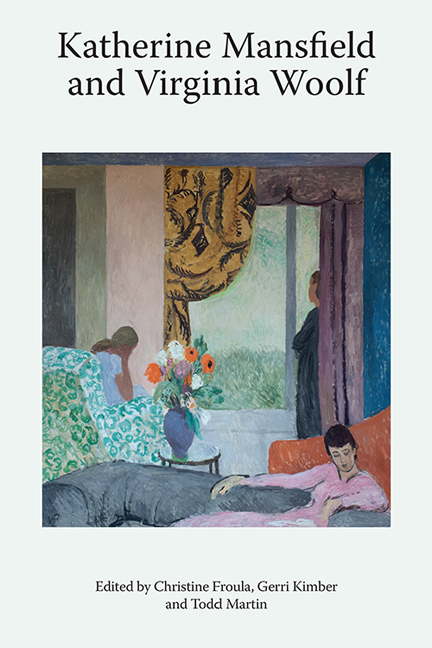A Conversation Set to Flowers: Beyond the Origins of Kew Gardens
Published online by Cambridge University Press: 07 May 2021
Summary
The year 1917 was a significant one for Virginia Woolf and Katherine Mansfield. They met for the first time in January, and over the following months they grew gradually closer. In the early part of the year Virginia and her husband, Leonard, established the Hogarth Press, and in June (despite the Woolfs’ lack of experience) Mansfield agreed to let them publish one of her stories. The work in question was Prelude (1918) and it would prove to be one of her most compelling works. Woolf was developing her own fiction during this time. Over the course of the year she drafted her second novel, Night and Day (1919), and wrote two short stories: ‘The Mark on the Wall’ (1917) and Kew Gardens (1919). Kew Gardens would mark a turning point in Woolf's literary career. It was her first experience of editing, typesetting and printing a book that had been authored by her alone, and it was the first of her works to be illustrated by her sister, Vanessa Bell. When Harold Child praised it in a review for the Times Literary Supplement, Woolf felt ‘showered’ with success (VWD1, p. 280), and the book was reprinted to satisfy the unexpectedly large number of orders. Shortly after it was published, Woolf saw the story as part of a new literary style, imagining ‘The Mark on the Wall’ and Kew Gardens ‘taking hands and dancing in unity’ to create an ‘entirely different’ form (VWD2, p. 14).
It was Antony Alpers who first suggested that the friendship between Woolf and Mansfield was responsible for the creation of Kew Gardens. In his biography of Mansfield, Alpers argues that a blueprint for the narrative can be found in a letter from Mansfield to Lady Ottoline Morrell. The letter describes a ‘conversation set to flowers’, with ‘pairs of people’ ‘walking in the garden’ (Letters 1, p. 325). Alpers argues that Woolf must have either seen this letter or received a very similar one from Mansfield that has since been lost. Whether Mansfield did inspire Kew Gardens remains an intriguing but unanswered question. Angela Smith dismisses the notion that Woolf copied Mansfield's concept, and concludes that there is ‘no implication that Woolf in any way plagiarized Mansfield's sketch for the story’.
- Type
- Chapter
- Information
- Katherine Mansfield and Virginia Woolf , pp. 75 - 86Publisher: Edinburgh University PressPrint publication year: 2018



